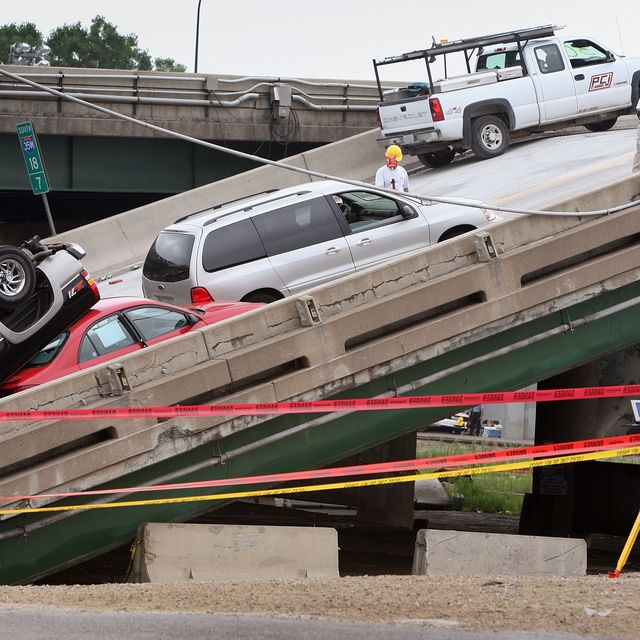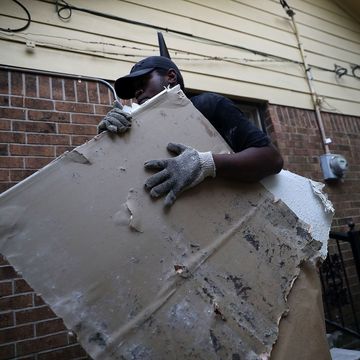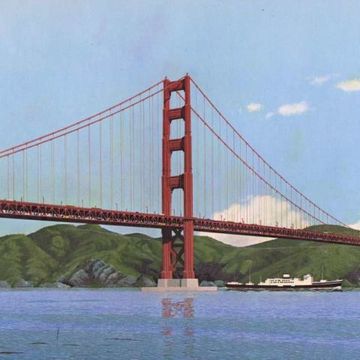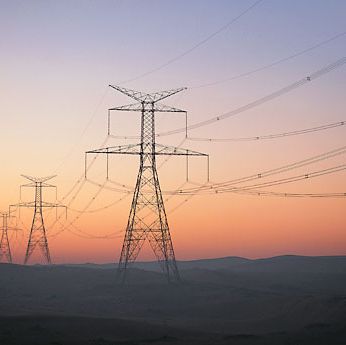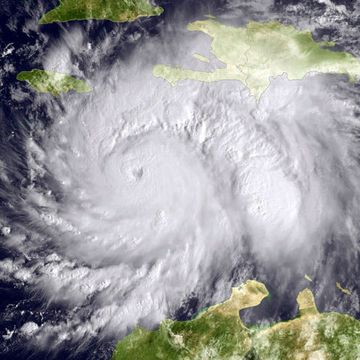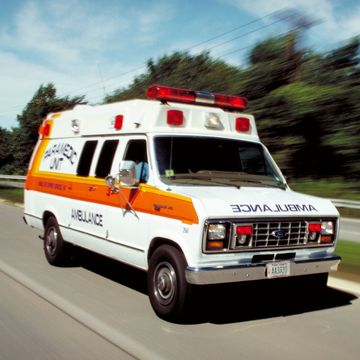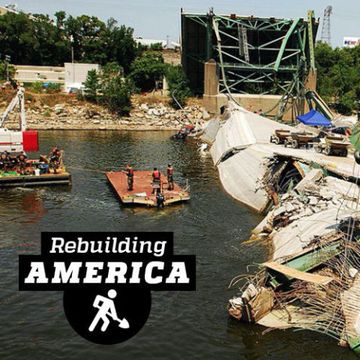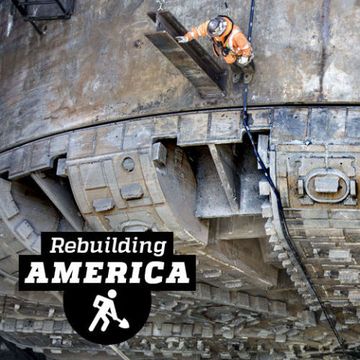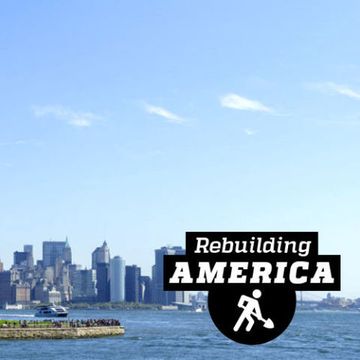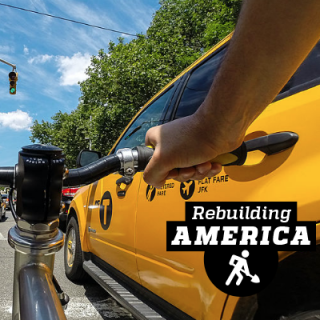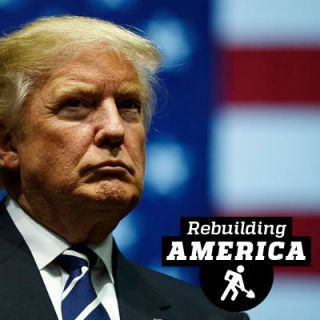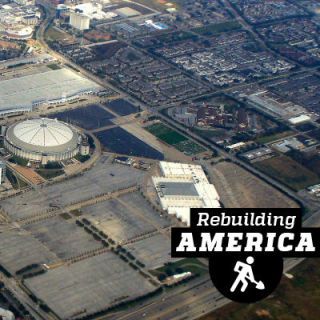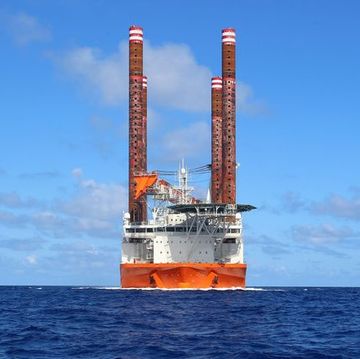On August 1, 2007, an old, blandly ominous truism—America's infrastructure is crumbling—turned deadly real. The I-35W bridge in Minneapolis buckled. Rush-hour traffic that was stalled on the bridge went into free fall; as dozens of vehicles plummeted into the Mississippi River. Thirteen people died, and 145 were hurt.
The collapse galvanized national interest in the state of U.S. infrastructure and inspired a swift and remarkably innovative project to replace the fallen roadway. The I-35W Saint Anthony Falls Bridge (subject of the May 2008 PM cover story) was open to traffic 13 months after its predecessor's collapse, three months ahead of schedule. The new bridge was a role model for efficient project management; rather than having builders wait months for tweaks, the design allowed them to adapt on the fly to problems encountered during the construction process. And it was a high-tech glimpse of civil engineering's future, lit by durable, energy-efficient LEDs and embedded with sensors that relay its condition to researchers at the University of Minnesota.
And nationwide, the collapse of I-35W inspired a genuine, bipartisan populist outcry and became a major factor in the political discourse. Americans demanded shovel-ready projects and, specifically, progress toward repairing the thousands of structurally deficient bridges around the country. But five years later, the crisis has reverted to a nagging sense of dread, and infrastructure is back where it was, where it inevitably seems to wind up—on the back burner. That's not a condemnation. When the American Society of Civil Engineers estimates that it could cost some $2.2 trillion over the next five years to repair critical infrastructure, is it any wonder that the public treats the issue as too big and too depressing to face?
Yet there is cause for hope. And that hope appears to rest with local initiative rather than huge national programs.
Yesterday, for example, a website called SaveOurBridges.com went live. It is the brainchild of Barry LePatner, who just released the book Too Big to Fall: America's Failing Infrastructure and the Way Forward to coincide with the fifth anniversary of the Minnesota bridge collapse. On the site LePatner published an interactive map of the nation's ailing bridges. It pinpoints some 72,000 structurally deficient bridges—where total traffic must be reduced to avoid further damage—as well 18,000 fracture-critical structures, which are in danger of collapse if a single element fails (based not on damage or decay, but on their design).
Most alarming is where these ratings overlap—where you have a bridge that is both structurally deficient and fracture-critical. The original I-35W bridge had this classification. There are 7980 such bridges in the United States.
Daunting as these numbers are, LePatner's map puts the crisis into local perspective, allowing users to identify nearby structures in need of repairs. "Until this map came along, they were only words on a piece of paper," LePatner says. "Now for the first time you can decide: Do you want your family to use that structurally deficient bridge? Businesses can decide whether they want their trucks crossing it. Politicians will have to confront a community that says, 'According to that map, which is based on government-issued ratings, this bridge could fall down. Why aren't we getting the funding to deal with it?' "
LePatner's is the kind of tool that PM hinted at in our 2008 feature but had yet to surface until now. And even if national apathy continues to confront our infrastructure woes, the local impact could be substantial. State-, county-, and city-level political platforms could live or die based on a single data point. It offers the potential for infrastructure accountability. And failing any measurable improvements, it might, at the very least, limit the death toll when the next bridge falls. As LePatner points out, the absence of a serious collapse since the I-35W is misleading. "Over the past 23 years we have had almost 600 bridge failures in this nation alone," he says. "That doesn't mean collapses, but a bridge failure where all of a sudden components fail and it might drop down 8 inches or a foot, and you have to close it." Those are the near misses. Eventually disaster will find its mark.
There are other glimmers of hope, some of them directly related to the I-35W collapse. The Minnesota Department of Transportation, which has become a model of nimble, adaptive management since the 2007 tragedy, has committed to replace or rehabilitate 120 of the state's 172 structurally deficient and/or fracture-critical bridges by 2018.
FIGG Engineering Group, which designed the new I-35W Saint Anthony Falls Bridge, is involved in another innovative bridge-replacement project. When a structurally deficient, 80-year-old lift bridge that linked Chesapeake and Portsmouth, Va., became unsafe to cross, local authorities couldn't scrape together the public funds to replace it. So FIGG came in to develop, design, and manage construction of a privately funded fixed bridge, which is scheduled to open this September and whose owners hope to recoup their $140 million investment though electronically collected tolls.
This, perhaps, is how you avert a national crisis. Not with grand gestures or wait-and-see damage control, but by dispensing with the excuses and simply fixing it, bridge by bridge, until our national infrastructure is shored up—and maybe even replaced by structures worth boasting about.
